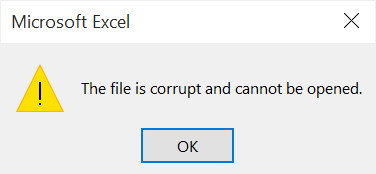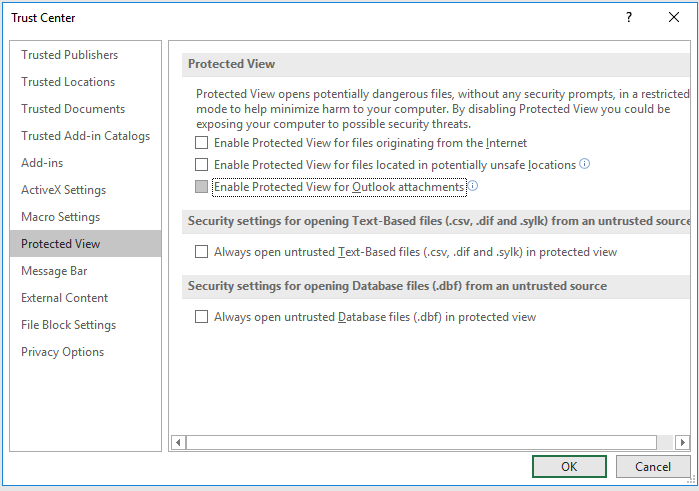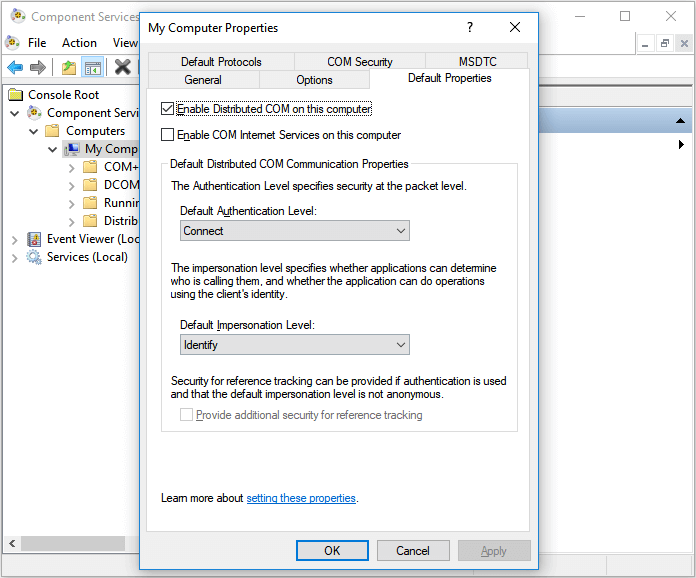[Fixed] The File Is Corrupted and Cannot Be Opened in Excel/Word
Here are four effective ways aim to fix the file is corrupted and cannot be opened in Microsoft. You can have a quick view and directly jump to the part you're most interested:
| Workable Solutions | Step-by-step Troubleshooting |
|---|---|
| Fix 1. Repair Excel/Word File | Download and install Qiling file repair software. From the software's main screen, select...Full steps |
| Fix 2. Disable Protected View Options | Open Word or Excel > go to Trust Center > Trust Center settings > go to Protected View...Full steps |
| Fix 3. Unlock the File | Right-click the file you have difficulty in opening and choose Properties...Full steps |
| Fix 4. Adjust Component Services Settings | Click "Start" and enter dcom, right-click Component Services and choose Run as administrator...Full steps |
About "The file is corrupt and cannot be opened" in Microsoft Excel or Word

The error message 'the file is corrupted and cannot be opened' usually pops up when users trying to open an Office file that is created in an older version in a newer version of Microsoft Office, for example, open a file created in Excel 2013, 2010, 2007 or earlier in Excel 2016 or open a file created in Word 2007 or earlier in Word 2013. Numerous users have been bothered by this issue after upgrading the Microsoft Office applications and asking for help online. Actually, the error "the file is corrupt and cannot be opened" can also occur after Microsoft Office reinstallation. Why does this issue happen? The main causes for "the file is corrupted and cannot be opened" in Microsoft Excel or Office are:
- The changes of settings in Microsoft Office after upgrading or reinstallation
- Protection of your computer against the files come from another computer
- The Excel or Word file is corrupted
4 Fixes for "The file is corrupt and cannot be opened" in Excel/Word
As you can see from the causes listed above, the error message 'the file is corrupted and cannot be opened' doesn't necessarily mean your file is damaged or corrupted. At most times, the files just become inaccessible because there is something wrong with the settings of the new versions of the Microsoft Office application. There are effectiveness-based fixes for "the file is corrupted and cannot be opened" in Microsoft Office.
Method 1. Repair Excel/Word File with Third-Party Software
When the file is corrupt, you cannot fix the error "the file is corrupt and cannot be opened" by changing the settings on your computer. Instead, if you want to access your file successfully, you need to repair the corrupted Excel files or Word documents with third-party file repair software. Qiling repair for Word software repairs corrupted Word .doc and .docx files and recovers the complete file data. Follow the steps below to repair excel files.
Step 1. Launch Deep Data Recovery, and then select documents file types and click "Next" to continue.

Step 2. This software enables you to fix damaged Word, Excel, PPT, and PDF files in same steps, and then scan disk with corrupted documents.

Step 3. Qiling data recovery and repair tool will scan for all lost and corrupted files. You can find the target files by file type or type the file name in the search box.

Step 4. Deep Data Recovery can repair your damaged documents automatically. After file preview, you can click "Recover" to save the repaired Word, Excel, and PDF document files to a safe location.
Method 2. Disable Protected View Options
Many users have reported they fixed the error using this method. However, disabling "Protected View" is potentially harmful to your computer system since it exposes your computer to possible security threats. Thus, we highly recommend you save the file as another one after you can access it, then enable "Protected View".
Step 1. Open Microsoft Excel/Word and go to File > Options.
Step 2. Go to "Trust Center" > "Trust Center Settings...".
Step 3. Go to "Protected View" and then uncheck all the boxes. Click "OK".
Step 4. Restart Microsoft Excel/Word.

Now you can try to open your file again and see whether the error message "the file is corrupt and cannot be opened" still exist.
Method 3. Unlock the File
If "the file is corrupt and cannot be opened" prompts when you try to open some of the Excel or Word files on your computer, you can try this solution for a quick fix.
Step 1. Find and right-click the file you have difficulty in opening.
Step 2. Choose "Properties".
Step 3. Under the General tab, check the box next to "Unlock".
Step 4. Click "Apply" > "OK".
Method 4. Adjust Component Services Settings
By adjusting the component services, you are changing your Windows registry. Be careful and operate prudently.
Step 1. Click "Start" and enter dcom.
Step 2. Right-click "Component Services" and choose "Run as administrator".
Step 3. Expand "Component Services" > "Computers" > "My Computer".
Step 4. Right-click "My Computer" and choose "Properties".
Step 5. Switch to the "Default Properties" tab. Then set the value of Default Authentication Level as "Connect" and the "Default Impersonation Level" as "Identity".
Step 6. Click "Apply" > "OK".

FAQs
1. How to Recover Lost Excel/Word Files
Although the hard drive recovery software - Deep Data Recovery cannot help to restore a corrupted Excel, it will help you recover Microsoft Office files lost due to accidental deletion, formatting, or other reasons. Have you ever found that you lost important Excel, Word, or PowerPoint files on your computer or external storage devices? If so, use Deep Data Recovery and you can retrieve the files with a few simple clicks.
Note: To guarantee a high data recovery chance, install Qiling data recovery software on another disk instead of the original disk where you lost files.
Step 1. Launch Deep Data Recovery on your Windows 11, Windows 10, Windows 8, or Windows 7 computer. Select file types and click "Next".

Step 2. Select the disk partition or storage location where you lost data and click "Scan".

Step 3. This recovery software will start scanning the disk to find all lost and deleted files. When the scan process completes, click "Filter" > "Type" to specify lost file types.

Step 4. Preview and restore lost Windows files. You can double-click to preview the scanned files. Then, select the target data and click the "Recover" button to save them to another safe spot in the PC or an external storage device.
2. How can I open a corrupted file?
To open a document after a file corruption error:
Step 1. Click File > Open > Browse and then go to the location or folder where the document (Word), workbook (Excel), or presentation (PowerPoint) is stored. ...
Step 2, Click the file you want, and then click the arrow next to Open, and click Open and Repair.
3. How do I fix a corrupted Excel file?
Step 1. Follow the temp file folder location on your PC and find the Excel temp files with TMP extension.
For Windows 8/10 users:
C:\Users\\AppData\Local\Microsoft\Office\UnsavedFiles
For Windows 7 users:
C:\Users\name\AppData\Roaming\Microsoft\Excel\
Step 2. Locate and find the temporary excel files begin with "$" or "~" and end with ".TMP".
Step 3. Copy these files and save them to another safe spot by changing the extension from.TMP to .XLS/.XLSX.
The Bottom Line
As long as your files are not really corrupted, you can fix the error "the file is corrupt and cannot be opened" in Excel or Word easily by changing your computer settings. However, if the file is corrupted and you have no backup available, the only chance for you to reaccess its content is to repair the file with professional repair software. Thus, I'd like to stress the importance of data backup. Whether you prefer manually copying files or using free backup software, you should back up your precious file regularly to avoid complete data loss.
Related Articles
- How to Upload Files to Google Drive Automatically
- How to Fix IRQL_NOT_LESS_OR_EQUAL Error in Windows 10/8/7
- Best Free SyncToy Alternative Software for Windows 10/8/7
- External Hard Drive Takes Forever to Load